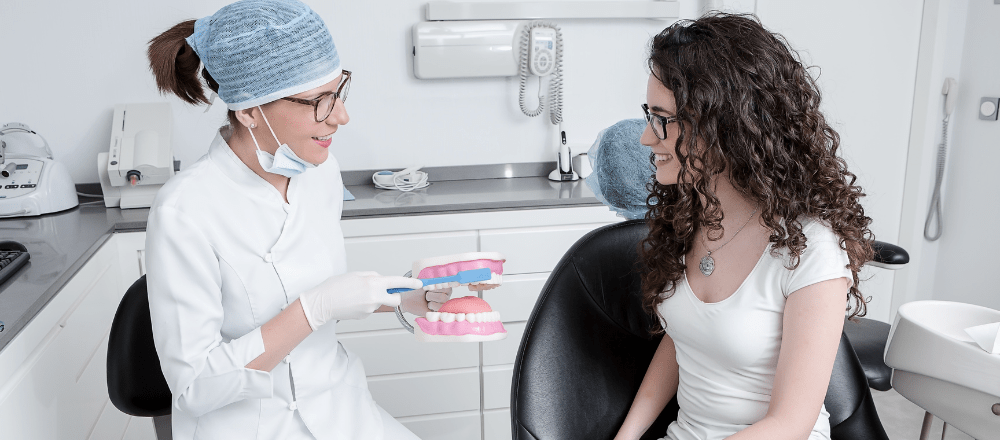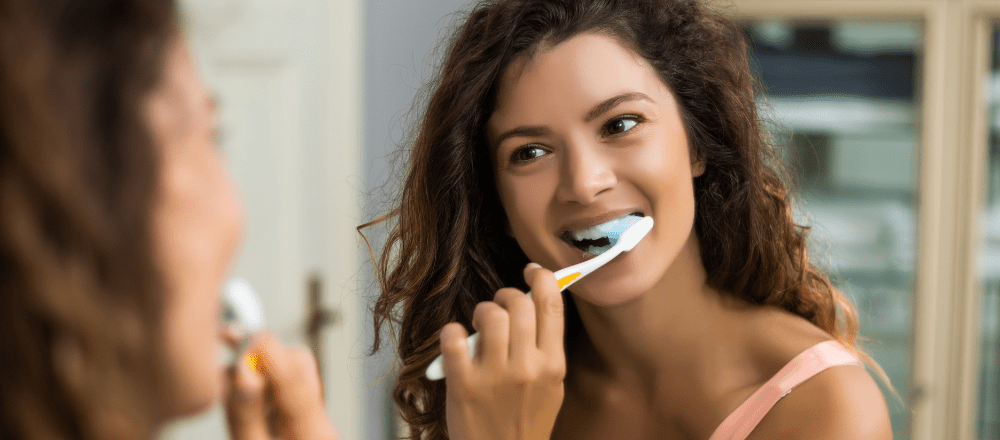5 Best Teeth Brushing Techniques to Master Oral Health

Have you ever wondered what might the best teeth brushing techniques be? Think of your daily tooth brushing routine as a dance – are you nailing all the right moves? Surprisingly, the way you brush your teeth can make a significant difference.
Mastering the right technique can keep your smile dazzling and fend off cavities and other dental issues. On the flip side, poor brushing habits can do more harm than good, potentially leading to damaged teeth and gums.
In this blog, we’ll dive into the top 5 best teeth brushing techniques that ensure you’re getting the job done right.

Why Right Technique Matters More Than You Think?
Your brushing methods might be stuck in the stone ages without you even realising.
Think of brushing your teeth like cleaning your kitchen counter. Just like a wet paper towel won’t properly disinfect your counter, a quick swipe over your teeth won’t effectively clean them. Using the right technique ensures your teeth are as clean as possible, which greatly benefits your oral health.
According to a study published in the Journal of Dental Research, proper oral care can have significant impact on your overall health. In addition to that, having a bright, confident smile can make a significant improvement both socially and professionally.
So, mastering the right brushing technique isn’t just about keeping your teeth clean—it’s about enhancing your overall well-being and confidence.
You can control and prevent gum disease by brushing under and around the gumline where bacteria and plaque build up.
Here are 5 common brushing techniques to help you clean your teeth effectively.
What are the Best Teeth Brushing Techniques?
1- Bass or Sulcular Method
To prevent gingivitis, use the Bass method, which involves using the bristles on your toothbrush to scrub away biofilm, or plaque, from behind your gums. The horizontal method was shown to be less successful at reducing plaque and gingivitis than the Bass and modified Bass procedures, according to a 2018 assessment.
- Place the toothbrush in line with your teeth.
- Make a 45-degree angle with the brush.
- Under the gum line, slightly incline the bristles.
- Before going on to the next region, gently but firmly press the area and brush back and forth or in a circular motion 15 to 20 times.
- After cleaning all of the teeth’s exterior surfaces, repeat the process with the interior surfaces.
- Hold the toothbrush vertically behind your front teeth and brush up and down with the toe of the brush.
- Brush the chewing surfaces of your molars and your tongue.
2- Stillman Technique
The Bass technique and the Stillman technique are identical. But rather than circular ones, you use short, soft back-and-forth strokes on all tooth surfaces.
3- Charters Technique
This technique is a dentist’s go-to for people with unique smiles. Got spaces between your teeth, or maybe some gum shrinkage? The Charter method tackles those tough spots with ease. It’s also a champion for folks with braces or fixed dentures, cleaning around them like a pro.
- Pointing towards the tooth’s chewing surface or crown, position the bristles at a 45-degree angle along the gum line. The Bass and Stillman approaches are the opposite of this angle.
- Using brief circular strokes or tiny back-and-forth motions, gently vibrate the brush for 15 to 20 counts.
- Make sure to brush every surface and angle of your teeth using the same pattern.
4- Fones Technique
Compared to the Bass, Stillman, and Charter methods, the Fones approach is easier to understand and less complicated, which makes it perfect for kids or people with poor dexterity.
The Fones method uses broad, circular strokes to clean the teeth, in contrast to other procedures that concentrate on certain angles and motions.
- With the bristles facing the gums, press the toothbrush up against your teeth.
- To clean your teeth’s outer surfaces, use big, circular motions.
- Utilise the same circular motion for inner surfaces.
- Use a back-and-forth motion to brush the chewing surfaces of your molar teeth.
- To freshen your breath and get rid of bacteria, brush your tongue and the roof of your mouth.
5- Modified Bass Technique
This technique is the ultimate all-rounder, borrowing the best from three different brushing methods. Think of it as a superhero team-up for your smile!
The Modified Bass technique combines elements of the Bass, Stillman, and Charter techniques. It focuses on effectively cleaning around the gumline, ensuring plaque and bacteria are thoroughly removed.
This technique offers gentle movements and efficient coverage for comprehensive oral hygiene.
- To ensure that the toothbrush’s bristles are just below the gum line, hold it at a 45-degree angle to the gums.
- Apply light circular motions or brief back-and-forth movements 15–20 times per location.
- To ensure complete coverage, brush every tooth in the same manner on the outside surfaces.
- Make similar movements to clean the interior surfaces.
- Use a back-and-forth motion to brush the chewing surfaces of your molar teeth.
- To freshen your breath and get rid of bacteria, brush your tongue and the roof of your mouth.

How Long Should You Brush Your Teeth?
It takes at least two minutes to properly brush your teeth, which, especially for young children, might seem like forever. Try using a timer to add some more fun to it. To encourage you to use the entire two minutes, some electric toothbrushes even have timers built right in.
Is there such a thing as Brushing teeth too much?
Brushing for more than two minutes is fine as long as you use firm but gentle pressure. Too much pressure can hurt your enamel and gums, causing sensitivity and irritation.
To understand how much pressure you’re using, try brushing with your non-dominant hand. You’ll notice the difference!
Conclusion:
To summarise, people often assume that the right brushing technique entails only choosing the right kind of brush. It is correct to some extent but is not everything. How you brush is essentially so important. The right technique makes all the difference.
Many benefits of brushing at 45 degrees have been highlighted by different experts. Each technique, from the Bass to the Modified Bass, offers unique benefits and is designed to target specific dental needs.
By dedicating at least two minutes to brushing and applying gentle pressure, you can effectively prevent cavities, gum disease, and other dental issues.
Remember, a healthy smile boosts confidence and overall well-being, so make sure you’re brushing the right way every day!
Sharing is caring! Let your friends know about this post by sharing it on social media:
On average, how long do you take to brush your teeth?

